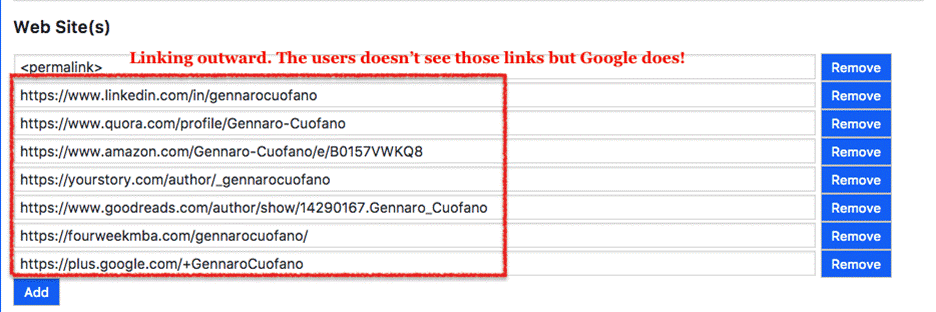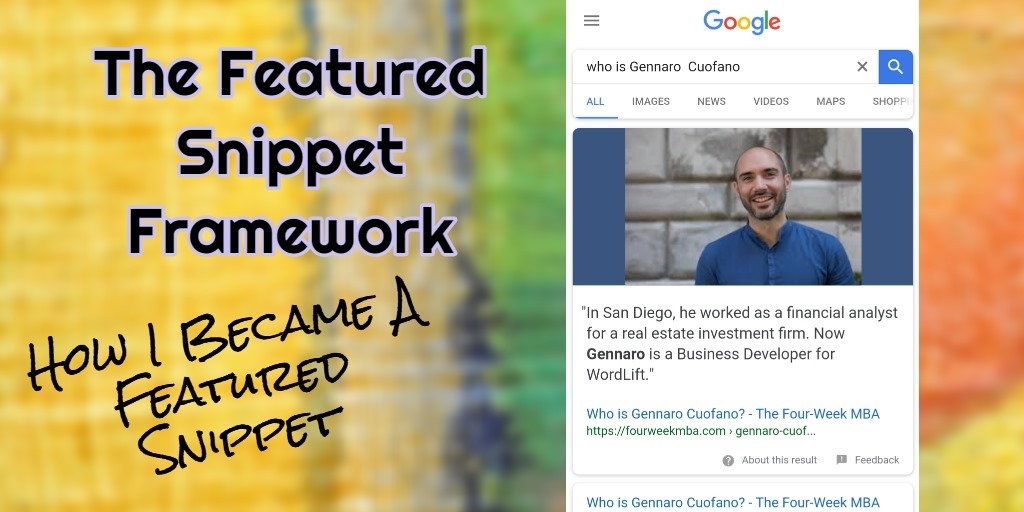
With the team at WordLift, we try to experiment on a daily basis to keep up with Google’s search algorithm evolution. In fact, Google’s search algorithm is a sort of black box, where you know the input A and output B but can’t be sure of what happened within the black box that made A become B. The most efficient way is to test to see what actions trigger specific results.
Based on that a few months back, with WordLift co-founder, Andrea Volpini, we started to experiment on the featured snippet with my blog. In fact, that is a feature Google uses to answer specific questions of users. That feature is quite important because in some way it is linked to voice search. In fact, often times what Google offers as a featured snippet will also be used as an answer for a voice search with a digital assistant powered by Google’s search algorithm.
Long story short, a few months ago I was curious to see whether I could trigger the featured snippet on a simple question: “who is Gennaro Cuofano?” from a page I had created on my blog.
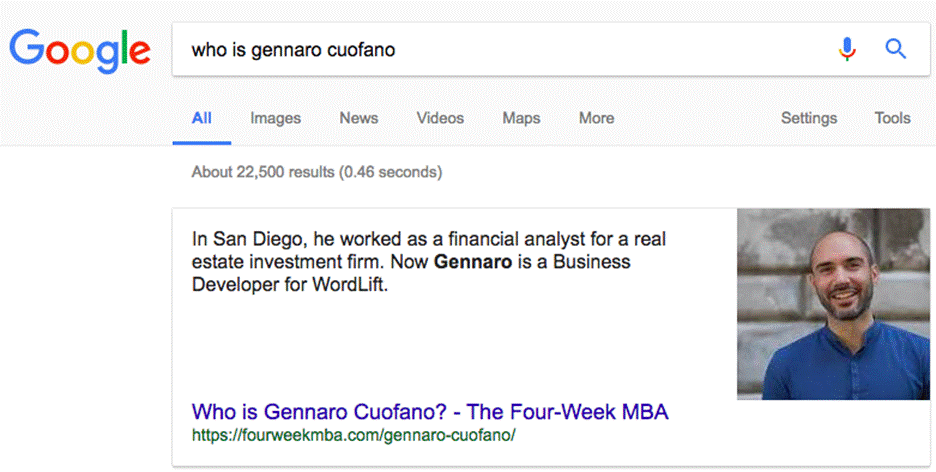
After almost three months since the experiment begun the featured snippet got finally triggered.
Why Is That Important At All?
Even though that might seem trivial, that is not. In fact, a featured snippet usually it is triggered when the information is coming from an authoritative web page. Also, when it comes to people, often Google’s featured snippet is triggered when a page exists in Wikipedia. Rarely it triggers a featured snippet on a person, which isn’t coming from there. However, this time was different. Google’s search algorithm triggered a featured snippet on a website with a low domain authority (when I started the experiment my blog had a domain authority of 19). Besides, the featured snippet is about myself. I’m neither a public figure, neither I have a Wikipedia page.
How was this possible?
Before we get to that, let me clarify why a featured snippet can be important for personal branding.
Why A Featured Snippet For Personal Branding?
Google is the ultimate source of of information. More than four billion searches each day go through it. From practical questions like “how to tie a tie” to more sophisticated ones “how to buy ripple” up to existential questions like “why am I so emotional.” No matter what we all expect Google to give us the ultimate answer that can solve any of our problems!
Today, people trust Google more than online-only media. In fact, on a survey of more than 33,000 people across 28 countries 63% said they trusted search engines, compared to only 53% of online-only media:
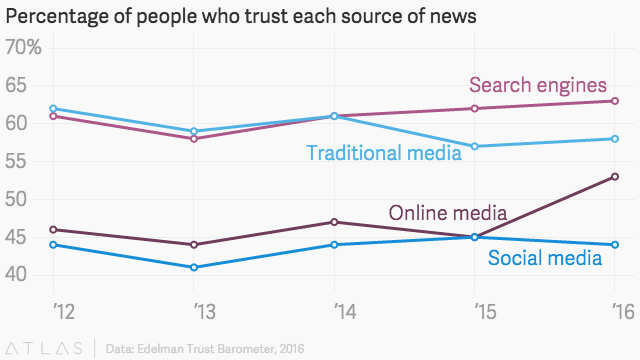
What does it all mean?
Simply put, if “Google said so then it must be so.” In other words, being able to control your personal and company branding by triggering a Google’s featured snippet might be the future of branding. In fact, that same featured snippet will be used by Google for the voice search commands given through Google Home and other personal digital assistants.
The Featured Snippet Framework For Personal Branding
With WordLift’s team we identified a few critical steps to take your content from zero to featured snippet, which revolves around these five pillars:
- Think like Wikipedia
- Use the entity-based content model
- Transform it in data that Google loves
- Link Outward
- Link Inward
Let’s dive into them one by one.
Think Wikipedia: Short, Conversational And Avoid The Storytelling
To get a featured snippet, you have to think of the content on the page almost like a bio you see on Wikipedia. In short, that is to be short (at least the introduction), conversational but most of all it has to be fact-based.
For instance, if you look at the page I set up strategically for the featured snippet has a few apparent features:
- It is about sixty words (more precisely that is 58 words)
- It targets a specific question (who is Gennaro Cuofano?)
- It matches the information I have on my LinkedIn profile (this is important to allow Google’s algorithm to check the truthfulness of the data)
Follow these instructions and create your featured-snippet-ready page.
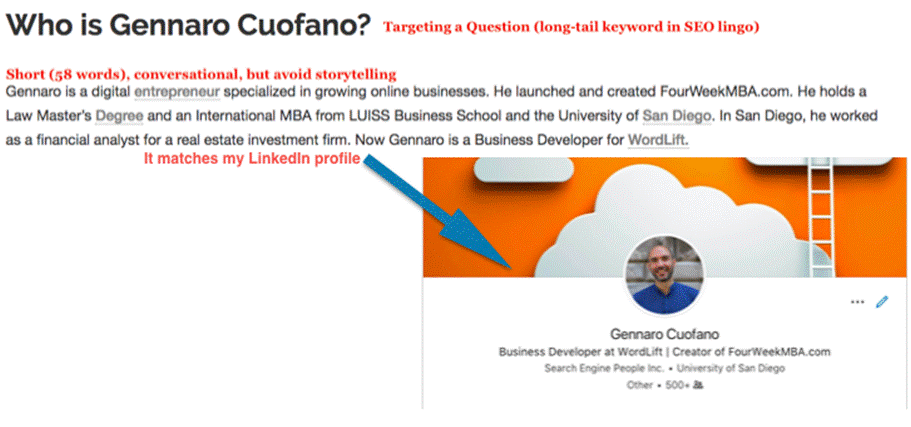
The Entity-based Content Model: Enter The Semantic Web
As I explained in previous articles for SEP Semantic SEO has become one of the most powerful tactics for your overall digital marketing strategy. Keywords are still relatively relevant, however, with Google getting smarter and smarter you might want to include the entity-based content model in your approach.
In short, to make my page easier to understand, index and rank for Google I transformed my page in an entity page. In the context, of Semantic SEO, an entity is something unique that exists on the web. In this specific case I transformed my page in a Schema entity type “person”:
Practically speaking, how do you do that? I used WordLift for this purpose:
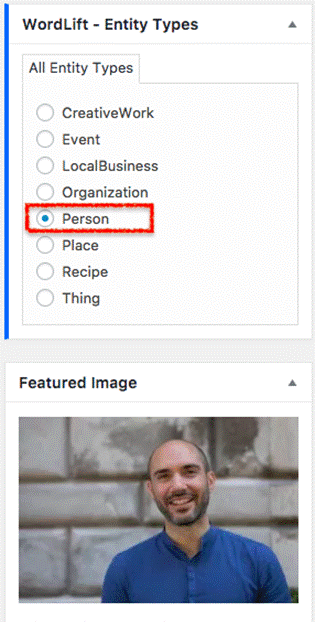
This first step helps Google understands the page I’ve set up is about a person. Now, how do I make Google know that the person we’re talking about is myself?
From Hyperlinked To Openlinked
As explained in my article for SEP:
When you implement Schema Markup on a web page, you’ve generated structured data. At the moment in which that data gets published on the web as metadata, it becomes open data; when that data gets connected it becomes open linked data.
That is a simplification. But the main point is that open linked data is another aspect that makes a significant difference to get your featured snippet. In fact, Google’s bots love 5-stars open data which as explained on 5stardata.info consists of the following steps:
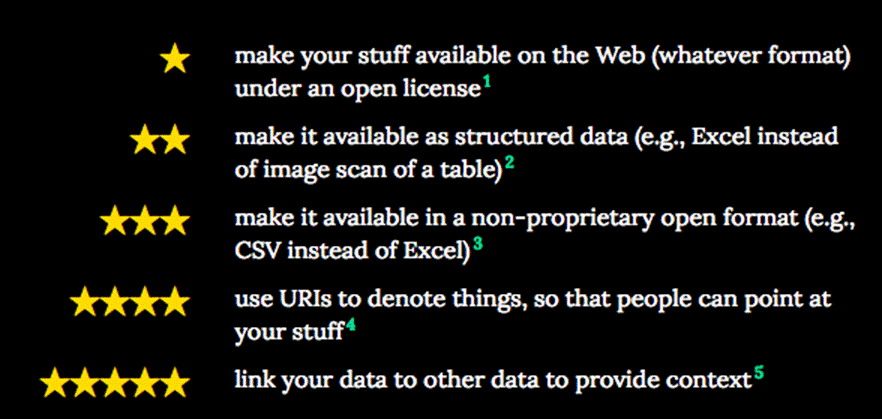
Source: 5stardata.info/en
How did I manage to generate 5-star open data on that page?
When I used WordLift to create the Schema markup, the software also generates a unique ID for the page, which follows the 5-star open data standard:
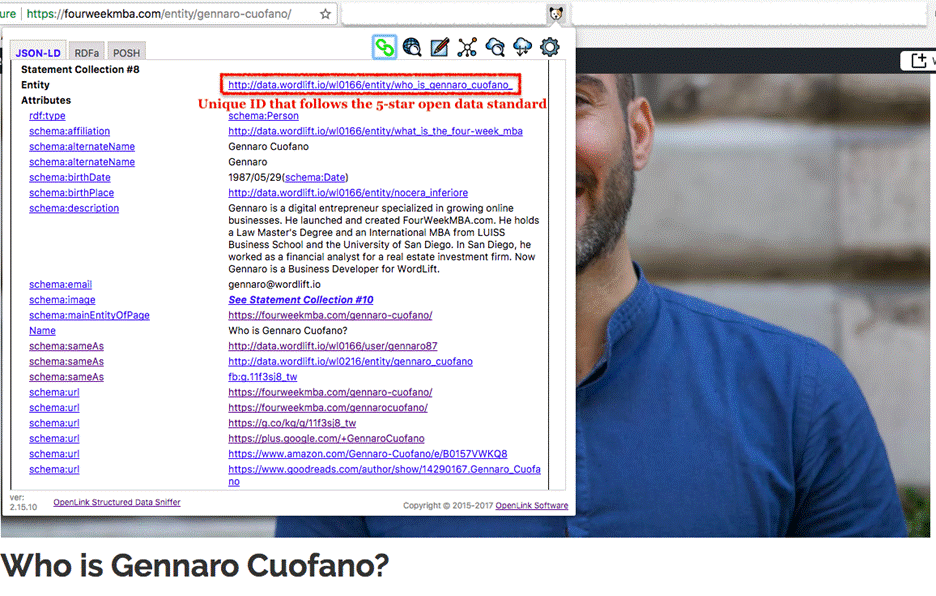
Link Outward: The Power Of References
When you’ve set up a dedicated page and followed all the steps above, you need to give Google more context and make sure you give it more sources to back-up the information you’re providing.
That is why it’s critical to link to websites where Google might be able to find data about you. In fact, in this page I set up with WordLift, the software gives me the option to set up additional fields, that allows me to point toward other sites (LinkedIn, Quora, Amazon and so on) where Google can find information about me. The users on the page don’t see those links. Yet Google does! That is how you give Google’s bots the chance to “fact-check” the data provided.
Link Inward: Juice It Up!
Once created a page about you. Make sure you link it back where it makes sense to do so. For instance, if you’re publishing a guest post on another website, make sure to link your name to your page, just like I did below:

This will improve the authority of the page for Google, thus getting it closer to the snippet!
Summary And Conclusions
In the last months with the team at WordLift, we’ve been experimenting a lot with the featured snippet. After seeing consistent results from our actions, we put together a featured snippet framework. That consists of a few key tactics, summarised in the five steps above.
Those tactics do not work in isolation but need to get implemented altogether. Schema and 5-star open data are together the backbone of the featured snippet. However, to help Google’s bots, that is crucial to complement this strategy with other three tactics.
First, try to target a long-tail keyword, by offering a short, conversational but cleaned of the story-telling answer. Second, a reference to other sources that help Google assess the quality of the information provided. Third, link back to that page to make it more relevant and closer to the snippet.
To discuss this framework feel free to connect with me on LinkedIn.
Little caveat: For those of you not based in the US or an English speaking country, you might not get the featured snippet as a result, unless you set the search results for the US (in fact my blog is in English and it targets US). To do that go on Google incognito. Then click on “settings” at the bottom right of your page. Select settings, then select “search settings.” In search settings select “United States” and save. Go back to your search box and ask “who is Gennaro Cuofano?”
The post The Featured Snippet Framework: How I Became A Featured Snippet appeared first on Search Engine People Blog.
(56)

